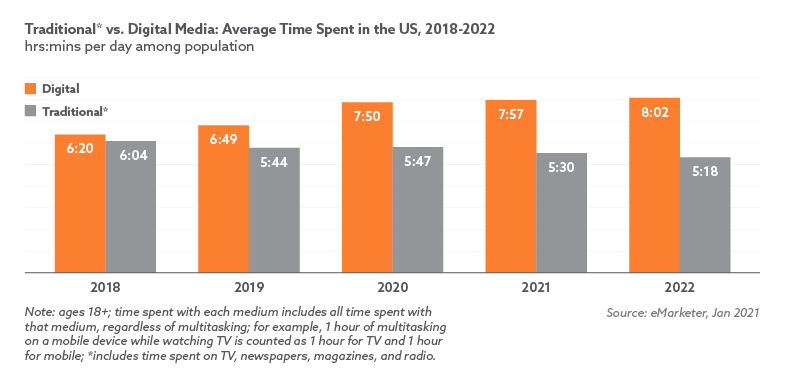Three seconds. Ten devices. Ten thousand ads.
What’s the most interesting ad you’ve seen lately? Where did you see it? What about the best ad you saw last week? Can you name ten brands you’ve seen an ad for in the last 7 days?
Every search, scroll, stream, and tap delivers between 6,000 and 10,000 ads to the average digital consumer every day – a number that has sharply risen since 2007 when the estimated average was up to 5,000. It’s a wonder that we actually remember any of the ads that we see. They’ve quickly become background noise, blinking and flashing in our peripheral vision as we move through websites, subtly placing products and reviews at the top of Google search results.
Every search, scroll, stream, and tap delivers between 6,000 and 10,000 ads to the average digital consumer every day – a number that has sharply risen since 2007, when the estimated average was up to 5,000. Click To TweetNow, pause to consider all of the devices you can use to access the internet in a given day (remember, your TV and gaming system are more and more likely to be included in this list). The average North American household has 10 connected devices. Most people can access and use at least two mobile phones and two computers at any given time. More and more often, they’re choosing mobile devices. According to projections from Google, by 2025 70% of all internet users worldwide will be using their mobile phones to access the internet.

What’s almost certain is that the vast information available to consumers within milliseconds, on any device of their choosing has drastically shortened their attention spans. The average internet user has an attention span of 8 seconds, down from 12 seconds in 2000.
When it comes to mobile users, attention is an even harder target. The average person touches their phone more than 2,000 times a day, rapid-fire interactions that often end as quickly as they begin. They’re not willing to wait around for pages to load or to spend too much time searching for the answer they’re looking for. More than half of mobile users will leave a website that takes more than three seconds to load.
The implications go beyond websites, extending even into TV and video. As users take to their mobile devices to consume content, they’re constantly interrupted by notifications, in both banner and audio form, beckoning them to turn their attention somewhere else.
More than half of mobile users will leave a website that takes more than three seconds to load. Click To TweetIn the constant battle for attention, the highest performing digital advertising and content uses the following key factors for success:
What are you focusing on to help your customers focus? Let’s talk about what’s working and what isn’t on Twitter @simplyws_.